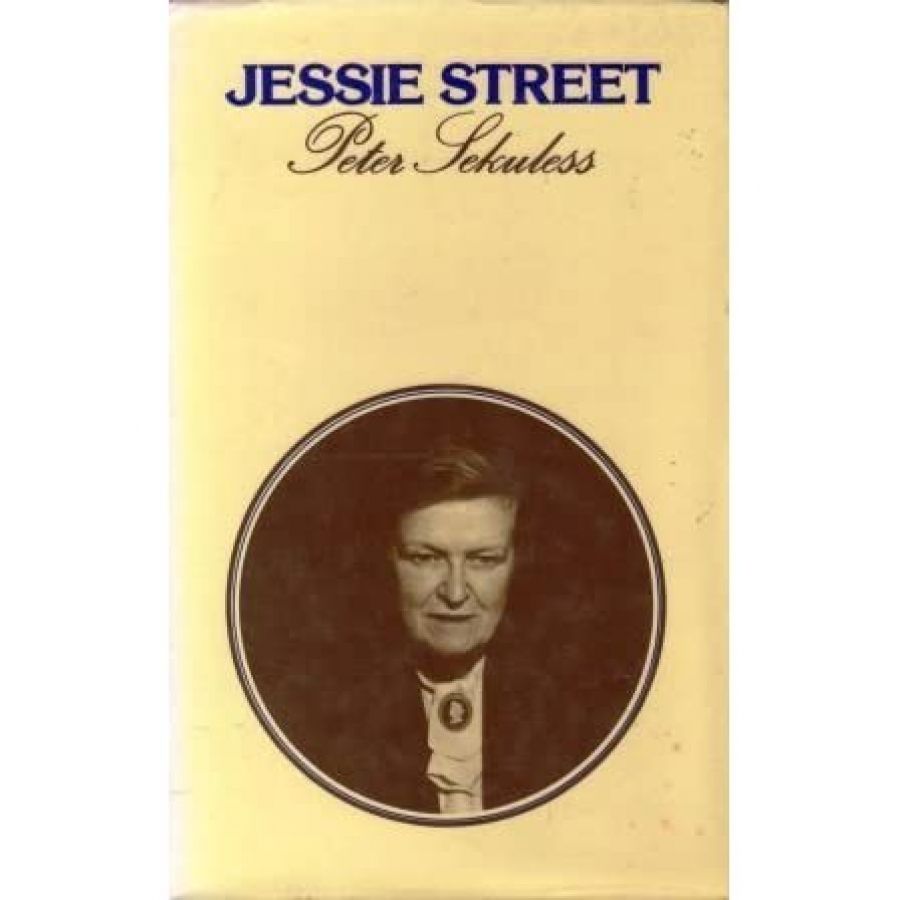
- Free Article: No
- Contents Category: Biography
- Review Article: Yes
- Article Title: A disappointing biography
- Online Only: No
- Custom Highlight Text:
Jessie Street, the subject of this biography, is one of the women we have ignored. She is an important figure in our history, but few people know much about her life. She was involved in feminist and socialist movements, in the Labor Party, in campaigns for Aboriginal rights and in the movement for world peace – in a long active career which spanned the years 1911–70.
- Book 1 Title: Jessie Street
- Book 1 Subtitle: A rewarding but unrewarded life
- Book 1 Biblio: University of Queensland Press, $6.25 pb, 218 pp
Peter Sekuless writes that the task of his book is ‘to fill the void left by Jessie Street’s inability to complete her memoirs’. Her own autobiography, Truth or Repose (1966), ends with the death of John Curtin in July 1945, and thus does not tell of her self-imposed exile from Australia in the 1950’s, nor of her involvement with Aboriginals later in her life.
This is an interesting book. Jessie Street was, after all, a very interesting person. It would be difficult to write a dull book about her, particularly as so few people are familiar with her life. However, it should have been a much more interesting and weighty book. One gains the impression that this is a ‘quickie’, run up to capitalize on the growing contemporary interest in women in our history. The author merely skims the surface of the life of Jessie Street and fails to set her in the context of her times and her activities and to give the reader an understanding of those times. Surely this must be the task of a biographer.
Although Peter Sekuless has consulted the Australian Archives and other archival sources, he has not done enough basic background research. Thus, his treatment of important areas is too superficial; if not inaccurate and misleading. Discussing Jessie Street’s involvement with the birth control movement, he refers to the Racial Hygiene Association of New South Wales, founded in 1926. He notes: ‘Its aims were to promote state wide campaigns on sex education and for the prevention and eradication of venereal disease, and to educate the community on eugenic principles. He goes on to speculate about why the word ‘Racial’ was used in the association’s name. If he had a basic knowledge of the history of birth control movements, he would have been able to answer that question. Furthermore, if he had consulted a general book on women in Australian history such as Anne Summers’ Damned Whores and God’s Police he would have found the reason for the use of the world ‘Racial’ – i.e. that this association had ‘eugenist notions about race improvement’. It is a pity that he didn’t read the work of such feminists, instead of merely making strange comments about them.
The technical production of the book is also rather shoddy. Two pages are wrongly placed as pp 182–3, while they should follow p 195. The index notes references to K.S. Prichard on pp 191 and 192, while in fact she is mentioned on pp 193 and 194.
In all this is a rather disappointing book. Jessie Street and the causes for which she worked deserve much better treatment.


Comments powered by CComment